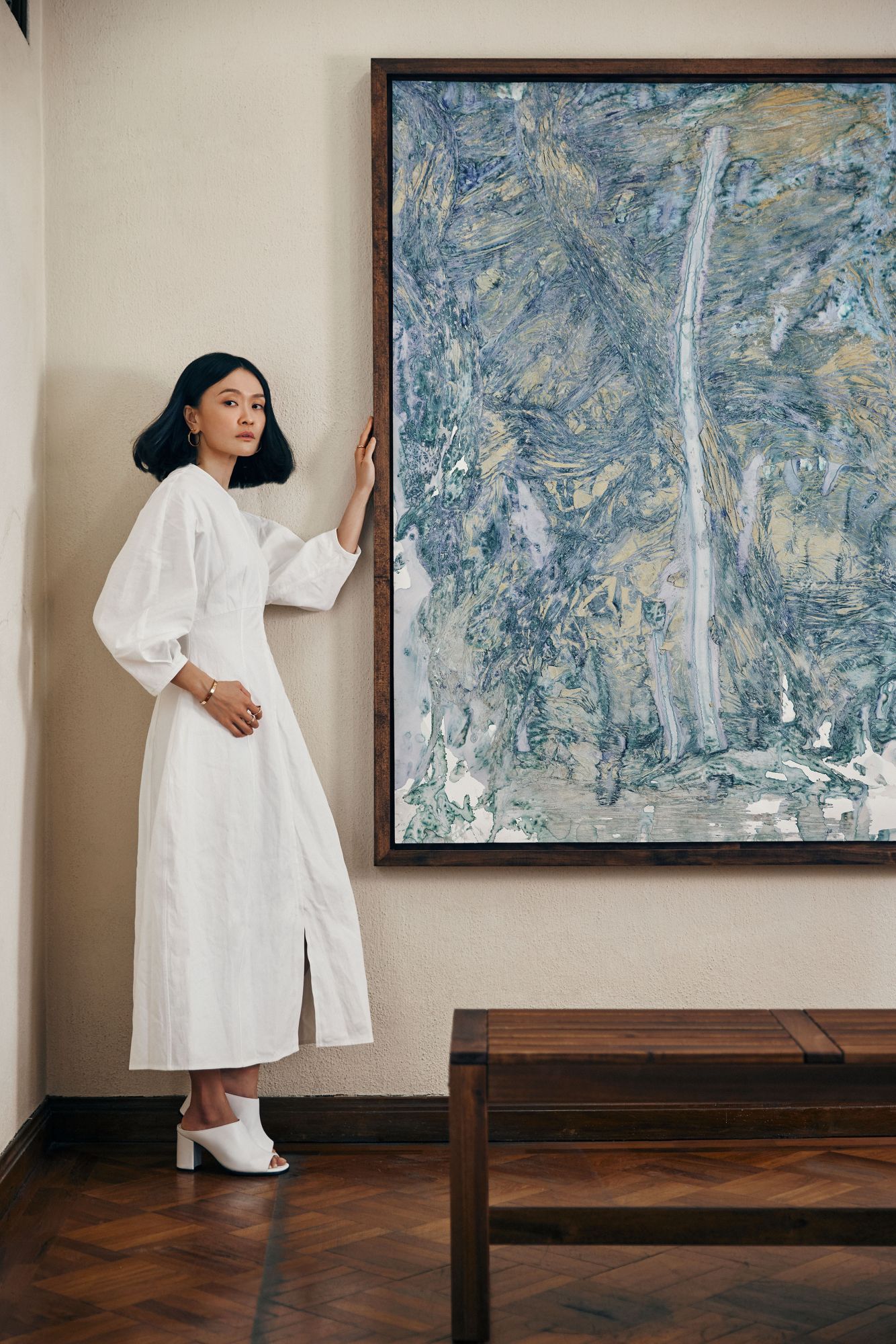The highly sought-after artist, who has previously held solos in Art Basel Hong Kong and the Art Paris Art Fair, reveals how her expressions of memories and the ephemeral are vividly brought to life across her body of work
As a child, whenever Dawn Ng’s parents brought her to the beach, she would always find a way to linger—not to sneak in a few extra minutes of playtime in the sand or to shirk cleaning up responsibilities. Rather, she has always felt this pull to capture the emotion of a fleeting moment before it is gone.
“I just wanted to stay on to take a photograph with my eyes,” the 39-year-old visual artist remembers. “I intuitively felt that there is true beauty and sadness in grasping a moment before it is gone and I have always sought to take it all in a bit more.”
This sensitivity to the passing of time is something that she continues to hold dear and it is a theme that has anchored her prolific output over the years, including her latest solo, Into Air.
In ways that are whimsical yet profound, her expressions of memories and the ephemeral are vividly brought to life across her body of work, which span a broad range of mediums including photography, light, film, collage, painting and large-scale installations.
For instance, 2010’s Walter, a series of guerrilla installations of a massive inflatable rabbit across the country’s landscape of nostalgic heartland enclaves is a gently humorous yet poignant reminder of slices of old Singapore that still remain. Then there is 2018’s Perfect Stranger, a “time capsule” based on a year’s worth of daily text messages with an Israeli psychologist, which has a way of inspiring viewers to slow down as they plumb through the depths of their own memories while viewing her work.
“One of the things that has always bothered me about the processing of time is how it boils down to numbers—cold, linear, sterile data points. I’ve always thought that this is antithetical to the true nature of time, which is emotional and elastic. Time flies when you are having fun and stands still when you fall in love,” says the nominee for the 2021 Sovereign Asian Art Prize.
Ng, whose work has been acquired by the Singapore Art Museum and exhibited at the Musee d’art contemporain de Lyon in France, adds, “The creative challenge that came to me was how do I rip out that spinal cord of numbers from our understanding of time? How do I give time a colour, shape and form?”
(Related: 5 Artworks by Singaporean Artists to Look Out For When You’re at the Civic District)


FROZEN MOMENTS
In 2017, this quest led her to begin an obsessive three‑year‑long study of the creation, melting and evaporation of over a hundred different 60 kilogram blocks of frozen coloured ice, which she painstakingly documented via photography, film and painting. This January, she launched the series as a solo exhibition in a former ship repairs factory at 2 Cavan Road.
There is something undoubtedly captivating about how Ng has managed to memorialise the “death” of ice blocks so poetically via a laborious process of trial and error. She says she melted down about 40 blocks of ice before it became second nature to handle this medium deftly. This experimentation has imparted her with a profusion of “nerdy” anecdotes about dealing with ice and frozen pigments such as her discovery that cobalt blue, usually a bright, intense hue, can turn into a dull lilac when mixed and frozen.
And to achieve the clear, intense shades of frozen pigments that pop so vividly in her exhibited work, she drew inspiration from the drinks served at Japanese bars. “The ice they use is super clear because of a technique called directional freezing where you insulate five sides of the cube during the freezing process so that gas is compressed. Over time I realised that this method of freezing gave me the best clarity and vividness of colour,” she says.
Each block was then photographed from 10 different angles at four-hour intervals until it melted entirely—and from this vast database of images, she ultimately selected 13 that evoke a sculptural stillness for the exhibition.
“It is about finding that one or two best moments in the entire lifespan of the block,” she says.
There were times, she recalls, that the team would spontaneously stop to watch the gradual drip and flow of the melting colours. “We knew that I would never be able to rebuild the block exactly as it was—and even if I could, I am not sure that I would want to,” she says.
For a sense of this fleeting, disintegrating beauty, she also released a film she made of one of the melting blocks. The melted mass was then gathered into large two-metre vats before she laid a sheet of cotton paper over the surface. As the liquid evaporated, the coloured pigments, such as ink and acrylic, are left behind as topographical blooms and textured tributaries on paper, which resemble large abstract paintings.
She says, “To me, ice is the perfect material precisely because it cannot last. If you think about the truth that from the moment we are born, we start to die—then ice yields to that law of nature in the most acute, condensed splendour.”



